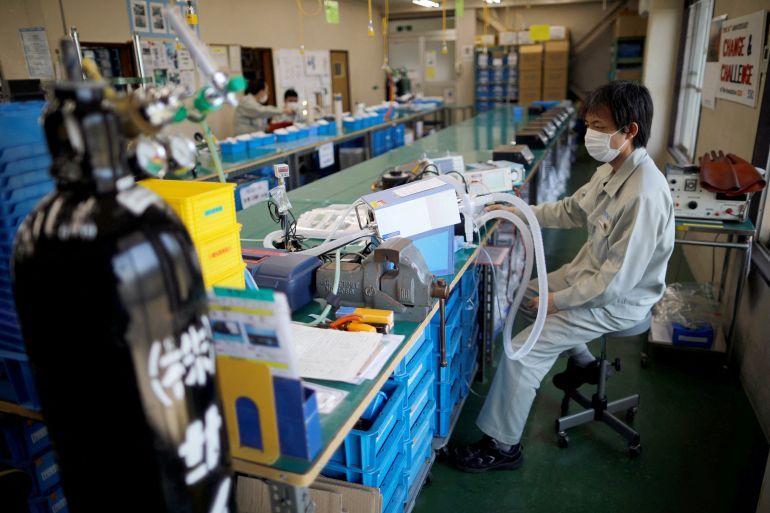When Crisis Meets Stable Response

In April 24, 2025, Japanese Prime Minister Shigeru Ishiba announced an emergency economic package aimed at mitigating the negative effects of broad US tariffs on Japanese industries and households. The relief measures include enhanced support for corporate financing, a subsidy to reduce gasoline prices by 10 yen ($0.07) per litre, and partial compensation for electricity bills for a three-month period starting in July. Ishiba emphasized the potential for significant economic disruption, particularly in key sectors such as automobiles and steel. The government will finance the package using a combination of reserve funds and pre-allocated gasoline subsidy resources, minimizing the impact on the current fiscal year’s state budget, which runs through March 2026.
The International Monetary Fund (IMF) anticipates that the Bank of Japan (BOJ) will postpone further interest rate hikes due to increased uncertainty from US tariffs, which are seen as dampening business sentiment and delaying investment decisions. Nada Choueiri, deputy director of the IMF’s Asia Pacific Department, emphasized that the risks to Japan’s economic growth and inflation are predominantly on the downside. The IMF now expects inflation to reach the BOJ’s 2% target in 2027, a year later than previously projected. Japan’s economic growth forecast for 2025 and 2026 has been revised downward to 0.6%. US President Donald Trump has imposed tariffs, including a paused 24% duty and ongoing 10% and 25% tariffs on cars, which are likely to impact Japan’s economy. The BOJ raised rates in January 2025 to 0.5% but may need to maintain accommodative policies longer if growth weakens. Japanese Prime Minister Shigeru Ishiba announced temporary fuel and utility subsidies to offset economic pressures. While the yen remains a stable safe-haven currency, the IMF cautions against broad-based fiscal support and urges Japan to resume fiscal consolidation by eventually increasing its sales tax.
In addition to these measures, the Japanese government is considering spending around $33 billion for payouts to low-income households and an income tax cut in a package of measures to cushion the blow to households from rising living costs. The spending, currently estimated around 5 trillion yen ($33.37 billion), will include a blanket, one-off income tax cut worth 30,000 yen per person and a residential tax cut worth 10,000 yen respectively, which will be implemented in June 2024. The spending plan, to be formally decided by Prime Minister Fumio Kishida’s cabinet on November 2, also features payouts to low-income households. Details on tax cuts will be discussed by the ruling party’s influential tax panel toward the year end.
Furthermore, Japan will spend $200 billion on a stimulus package to cushion the economy from the impact of inflation and the weak yen. The overall size of the package, including private-sector funding and fiscal measures, is expected to amount to 71.6 trillion yen ($490 billion). The plan includes about 45,000-yen ($300) subsidies for household electricity and gas bills and coupons worth 100,000 yen ($680) for women who are pregnant or rearing babies. The 29 trillion-yen ($200 billion) spending package will be part of a supplementary budget that still must be approved by the parliament. Kishida vowed to compile and submit a budget plan and get it approved as soon as possible. His support ratings have sunk since July amid public criticisms over his Liberal Democratic Party’s longstanding cozy ties with the Unification Church, which is accused of brainwashing adherents into making huge donations, causing financial hardships and breaking up families.
In conclusion, Japan’s government has unveiled a series of emergency economic measures to counter the adverse effects of US tariffs and rising inflation. These include support for corporate financing, subsidies to lower gasoline prices, partial compensation for electricity bills, and payouts to low-income households. The government aims to finance these measures using reserve funds and pre-allocated resources, minimizing the impact on the current fiscal year’s budget. The IMF anticipates that the BOJ will postpone further interest rate hikes due to increased uncertainty from US tariffs, which are seen as dampening business sentiment and delaying investment decisions. Additionally, the Japanese government is considering a significant stimulus package to cushion the economy from the impact of inflation and the weak yen. These measures reflect Japan’s proactive approach to mitigating economic challenges and supporting its industries and households











